Disclaimer: This post may contain Amazon affiliate links. Sudachi earns a small percentage from qualifying purchases at no extra cost to you. See disclaimer for more info.
Featured Comment:
“Made this tonight and was shocked at how good at was, especially your method for poaching chicken in the microwave. Great stuff!”
– jaedoe
What Are Somen Noodles?
Somen is a type of thin noodle made from wheat flour and one of the most common noodles used in East Asia, including Japan. It is mainly sold in dried form and is available year-round in supermarkets. However, since it is often eaten cold rather than hot, it is well-known as a standard summer dish in Japanese households.
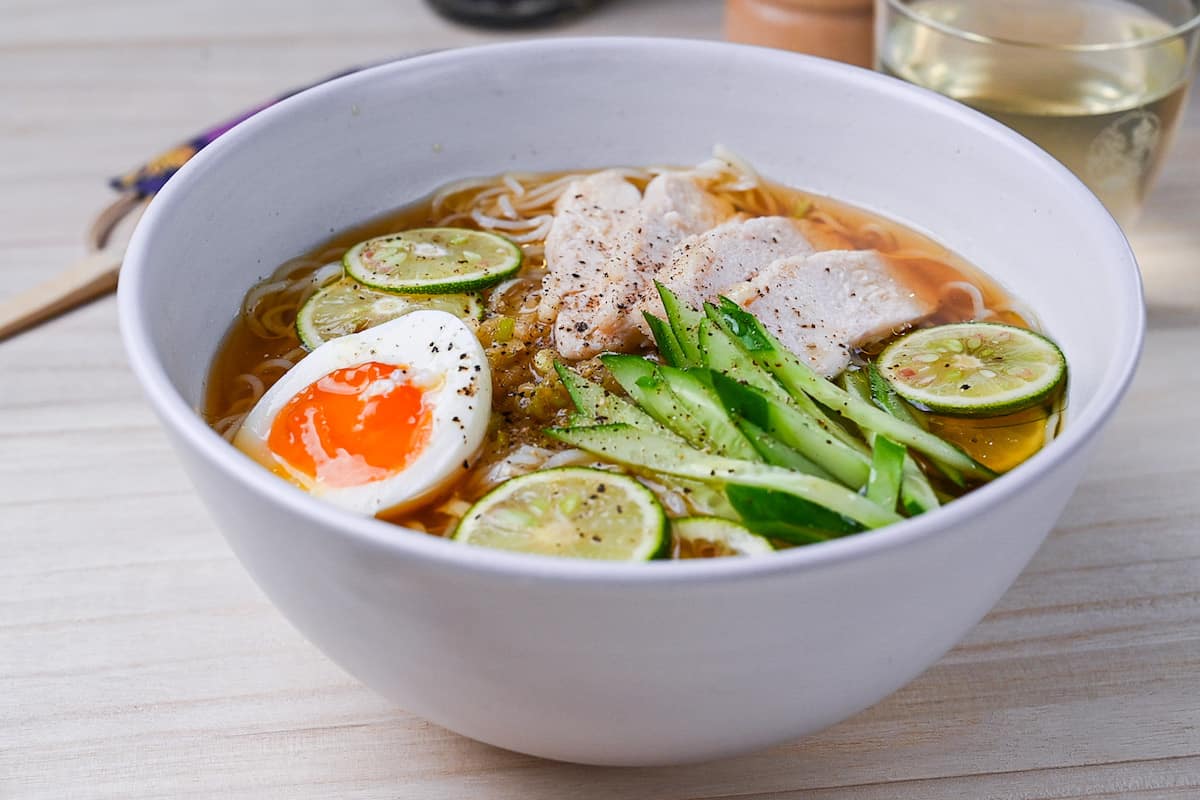

How I Developed This Recipe
Somen, usually enjoyed in Japan during summer like zaru udon or zaru soba with dipping sauce, but I decided to take a different approach this time. I wanted to maintain the essence of a chilled dish but transform it into a noodle soup style.
To add a refreshing twist, I incorporated sudachi, a citrus fruit, enhancing the dish’s lightness and making it perfect for hot summer days.
This recipe is a delightful variation, offering a refreshing and enjoyable meal to beat the summer heat!
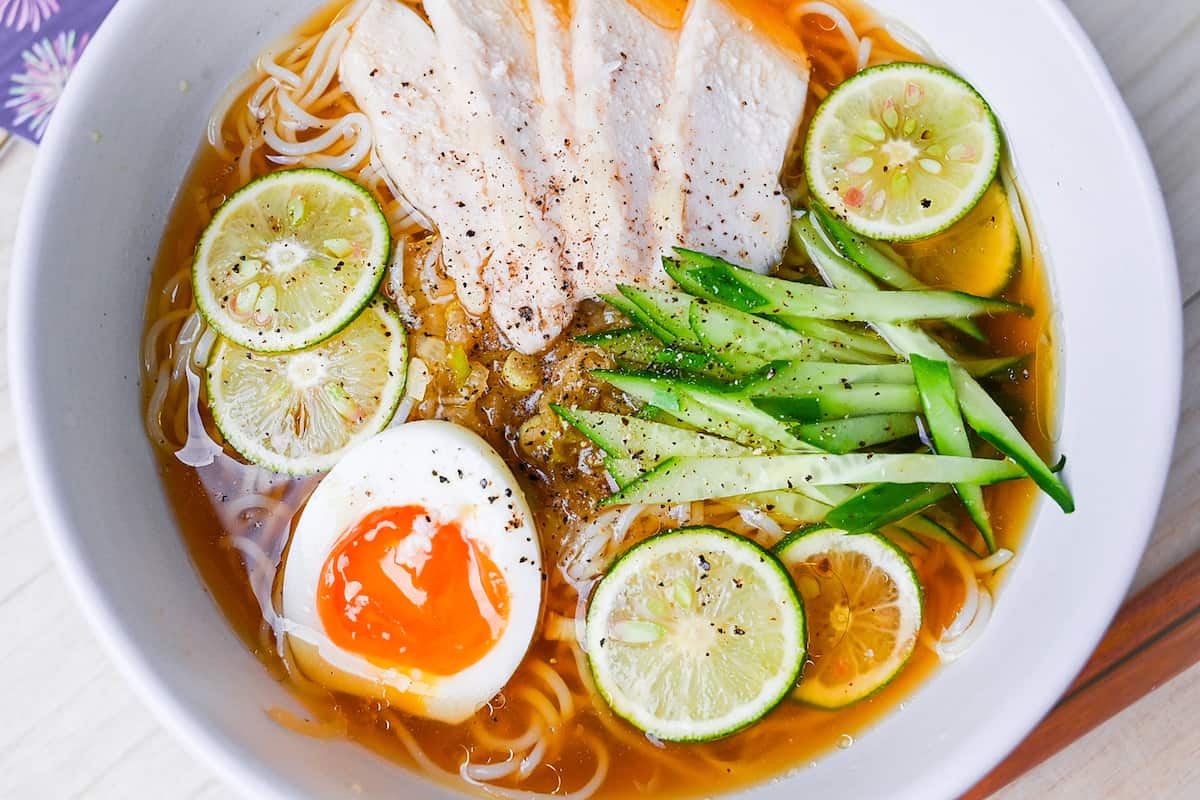
Ingredients & Substitution Ideas
- Dry Somen Noodles: Ultra-thin and made from wheat flour, water, salt, and coated with vegetable oil before being stretched thin and sun-dried.
- Sudachi: This can be substituted with lime or lemon for a similar citrus flavor.
- Cucumbers: Japanese or Persian cucumbers are preferred for their crisp texture and taste.
- Boiled Egg: A soft-boiled egg is recommended for its creamy texture.
- Sesame Oil: Kadoya’s sesame oil is suggested to add a subtle flavor.
- Ingredients for Chicken Topping: Combine chicken breast, cornstarch, sake, mirin, Chinese-style chicken bouillon powder, and sugar.
- Soup Ingredients: Prepare with green onions, water, soy sauce, Chinese-style chicken bouillon powder, grated garlic, salt, and sugar.
Curious about the exact brands and products that bring my recipes to life? Discover the brands and ingredients behind my recipes at the Sudachi Amazon Storefront. Explore my handpicked pantry essentials and find your next kitchen favorites!
Jump to Full Recipe Measurements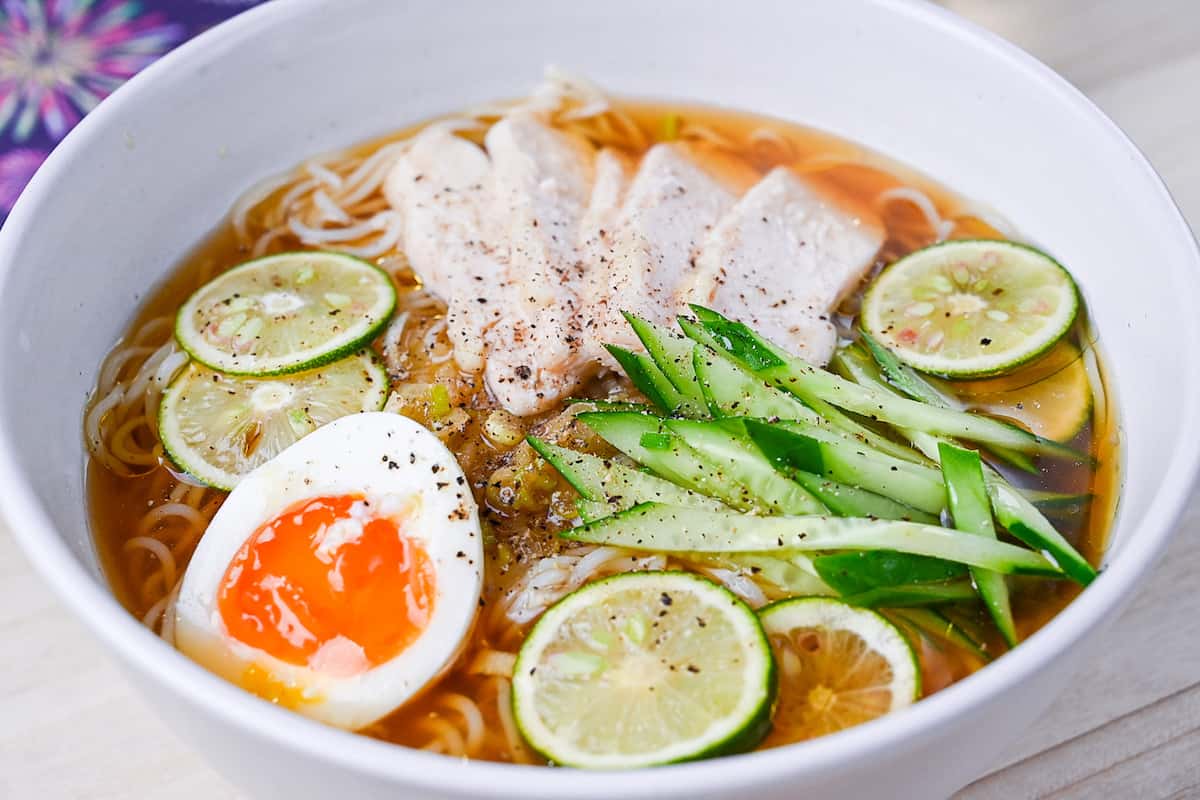
Visual Walkthrough & Tips
Here are my step-by-step instructions for how to make Chicken Somen Noodle Soup at home. For ingredient quantities and simplified instructions, scroll down for the Printable Recipe Card below.
I like to use chicken breasts to keep the dish light and refreshing. A shortcut I use for steaming chicken is the same one I use for my salad chicken recipe: I simply microwave it! If you follow these steps, you will have perfectly cooked chicken breast!
First, dry the surface with a paper towel and pierce both sides all over with a fork. This tenderizes the meat and helps the steam penetrate thoroughly so it cooks all the way through.

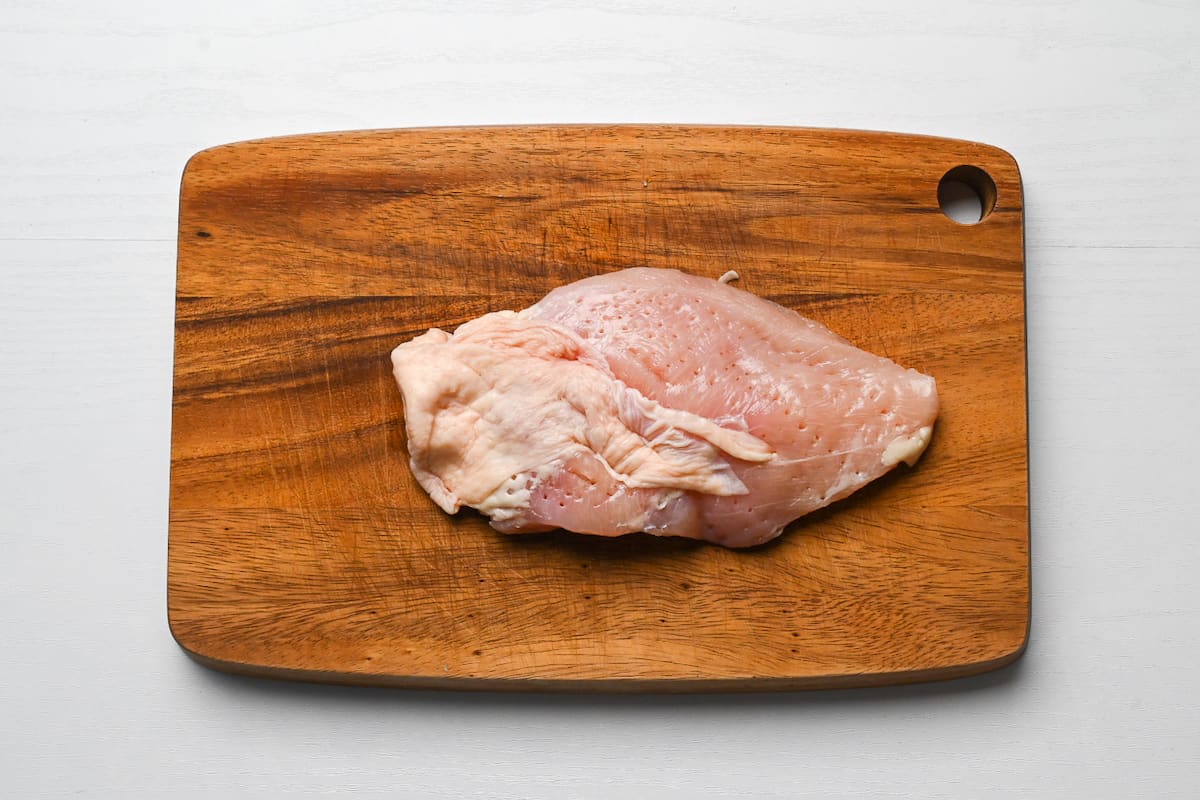
Then sprinkle a pinch of salt on both sides and coat with a thin layer of cornstarch.
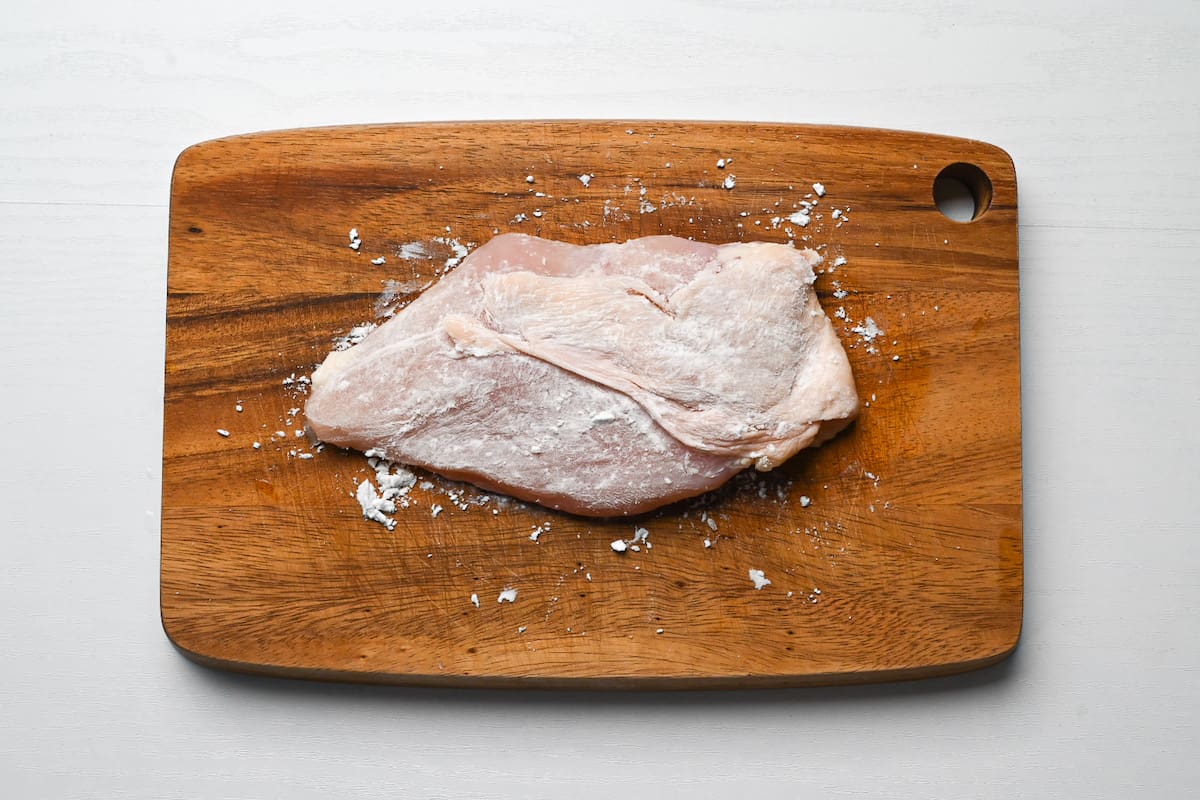
Take a microwavable bowl big enough to fit the chicken and make a sauce by mixing sake, mirin, chicken stock powder, sugar, and salt together. Place the chicken in the bowl and turn it a few times to cover it with the sauce.
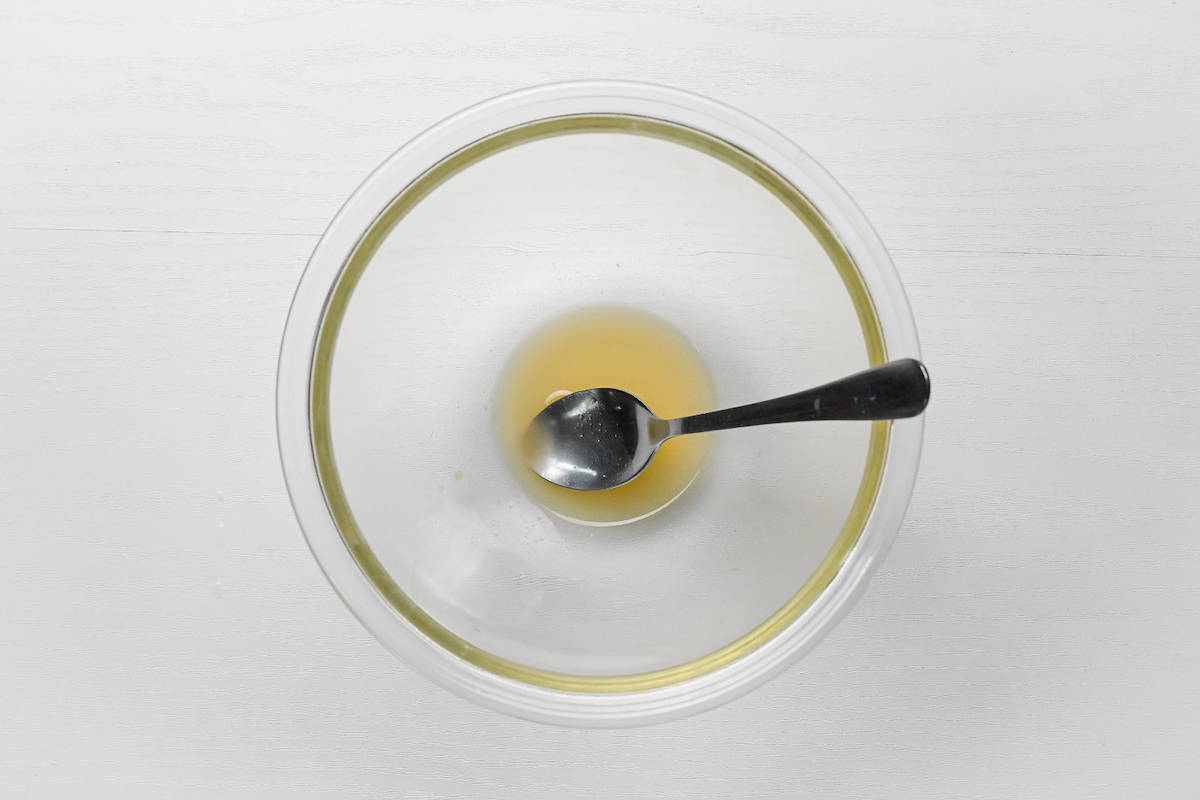
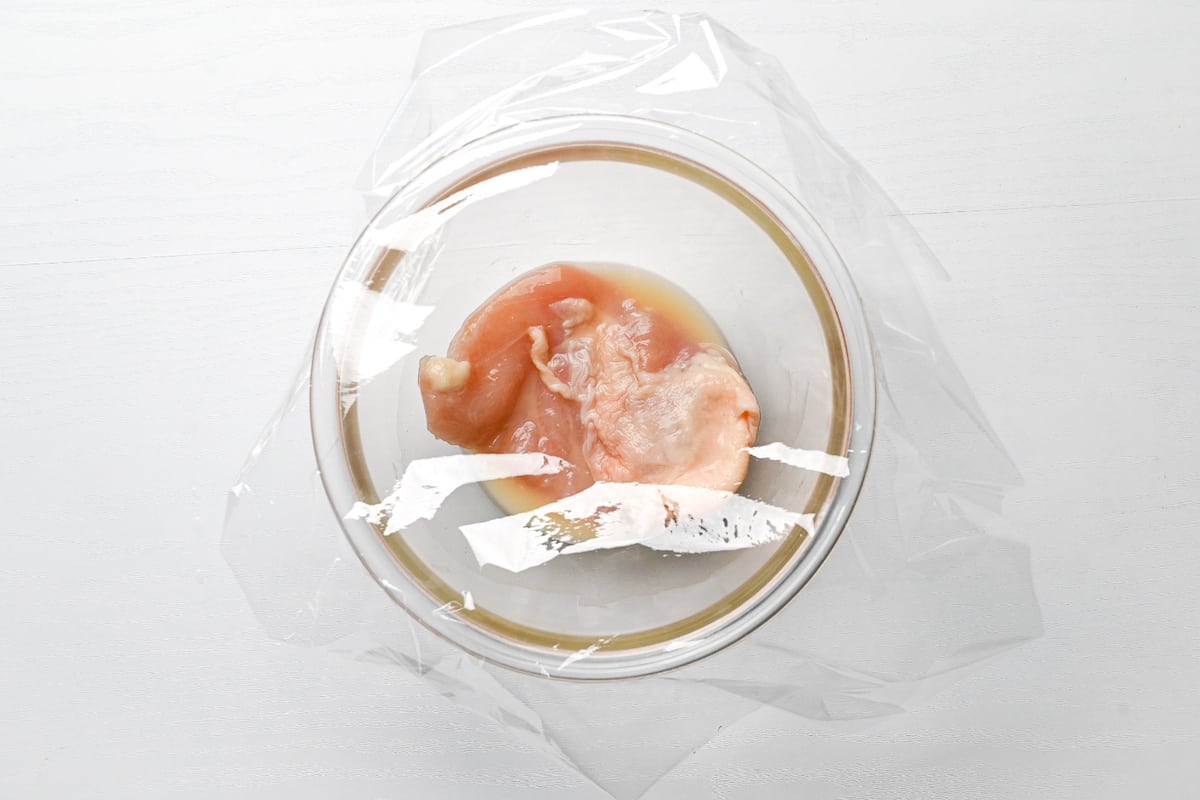
Cover loosely with plastic wrap and microwave for 1 1/2 minutes at 600W.
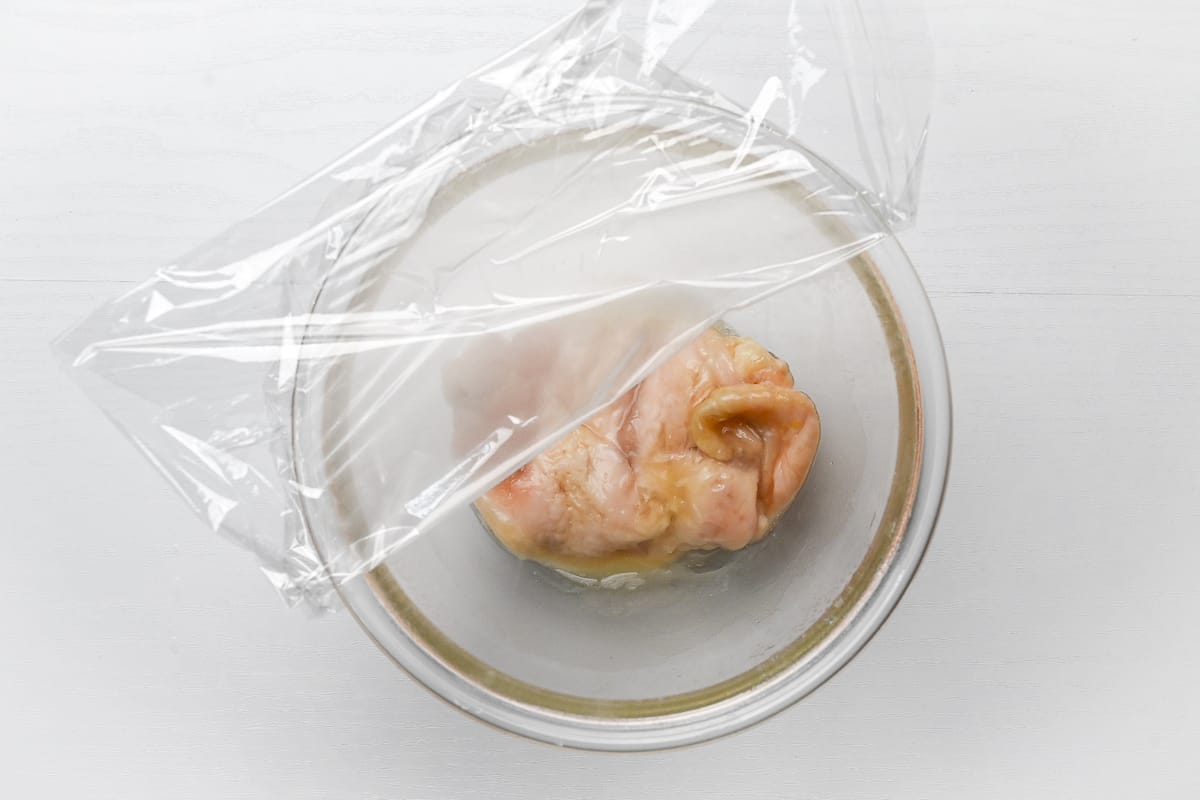
Turn the chicken over and microwave again, 1 1/2 minutes at 600W.
Once it’s done, leave it in the microwave still covered for 10 minutes to finish cooking in the steam. (This step is important; if you skip it, then the chicken might be undercooked!)
The 10 minutes of resting time in the steam is vital to ensure the chicken is fully cooked; don’t skip this step!
Once 10 minutes have passed, take the chicken out of the bowl, wrap it up, and leave it to cool for about 10 minutes. Make sure to save the leftover juices in the bowl for the noodle soup later!
Once the chicken is cool to the touch, place it in the refrigerator. Since this dish is served chilled, it’s better if the chicken is also thoroughly chilled. If you have time, I recommend chilling for at least 30 minutes, preferably 1 hour.
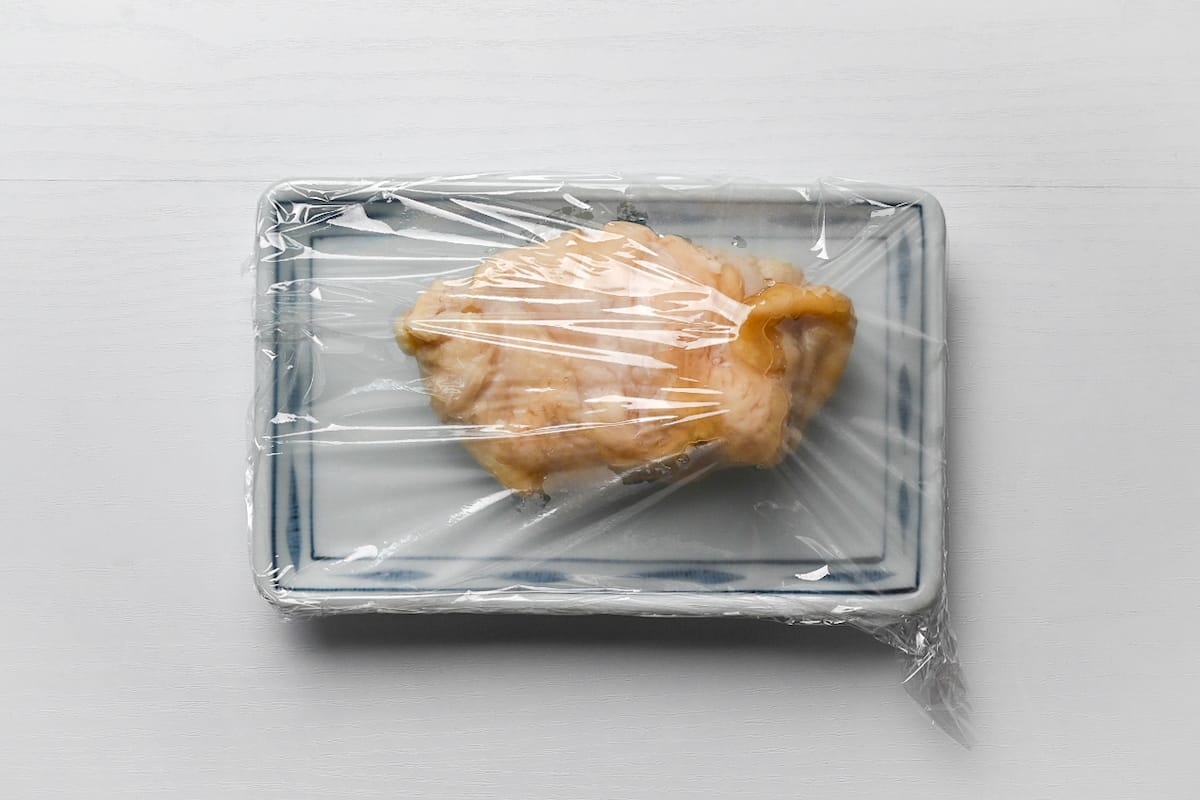
To make the somen soup, take a microwavable container and add water, chicken stock powder, soy sauce, grated garlic, sugar, and salt. Mix the ingredients and then microwave for 2 1/2 minutes at 600W.
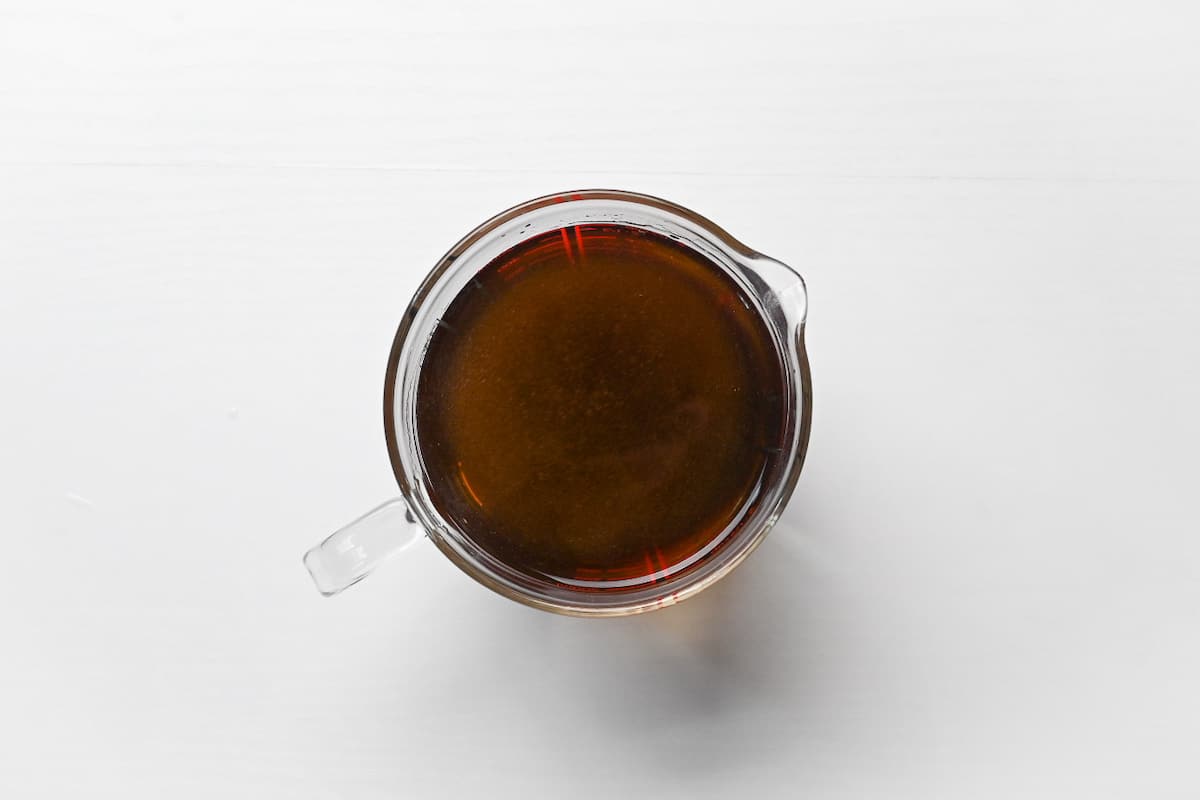
Next, finely chop some spring onion and add it to the soup. You can also pour the leftover juices from the chicken into the soup for extra flavor!
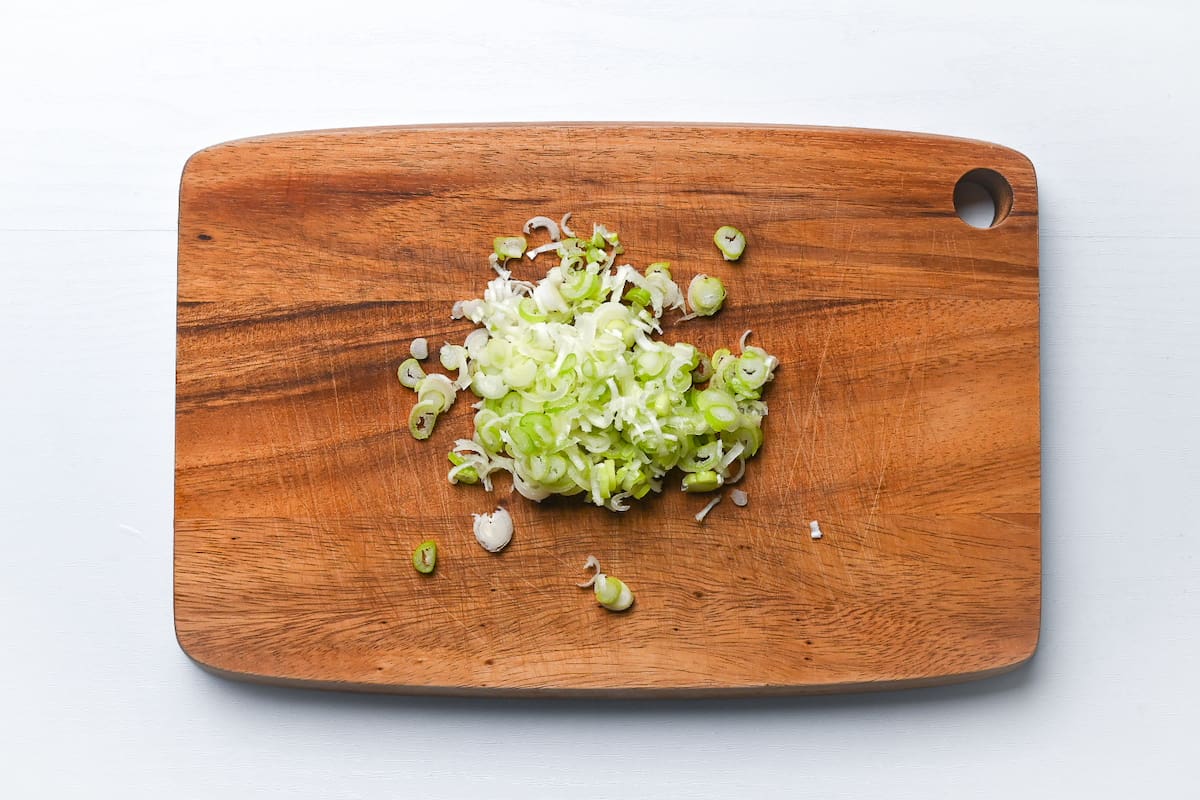
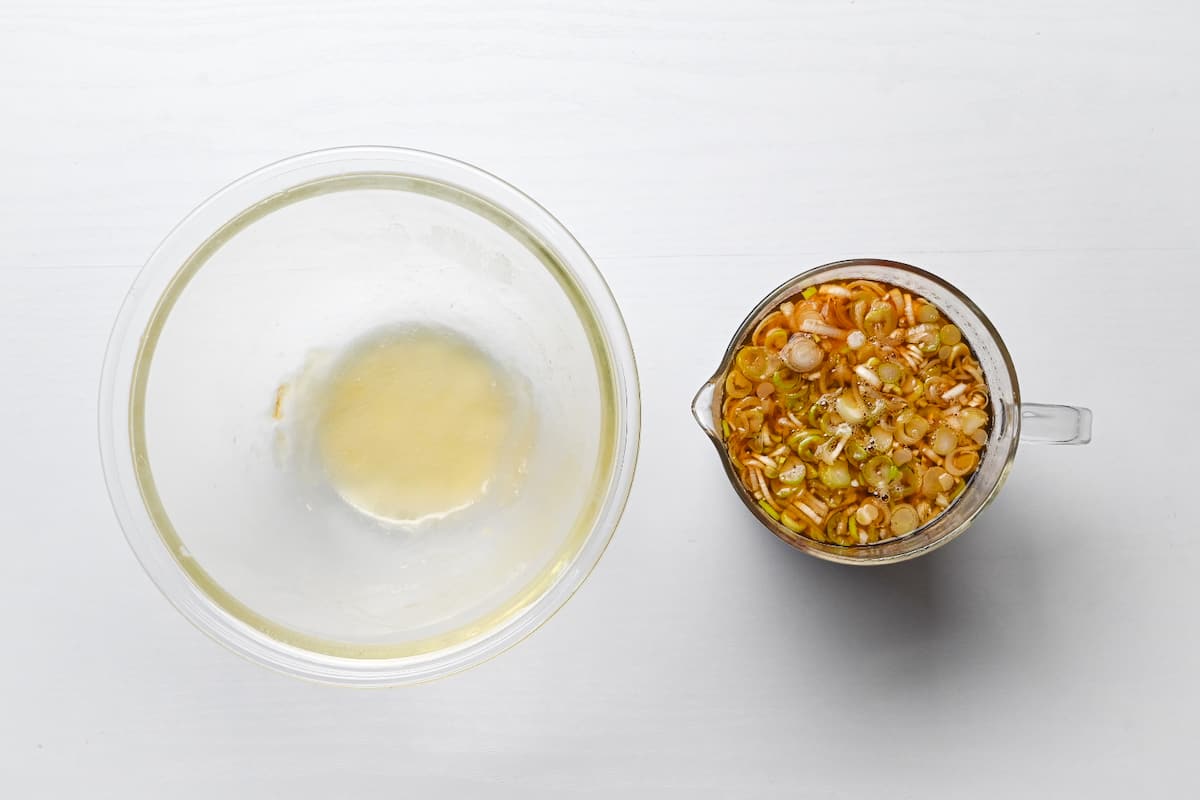
Cover the noodle soup and chill in the fridge for at least 30 minutes.
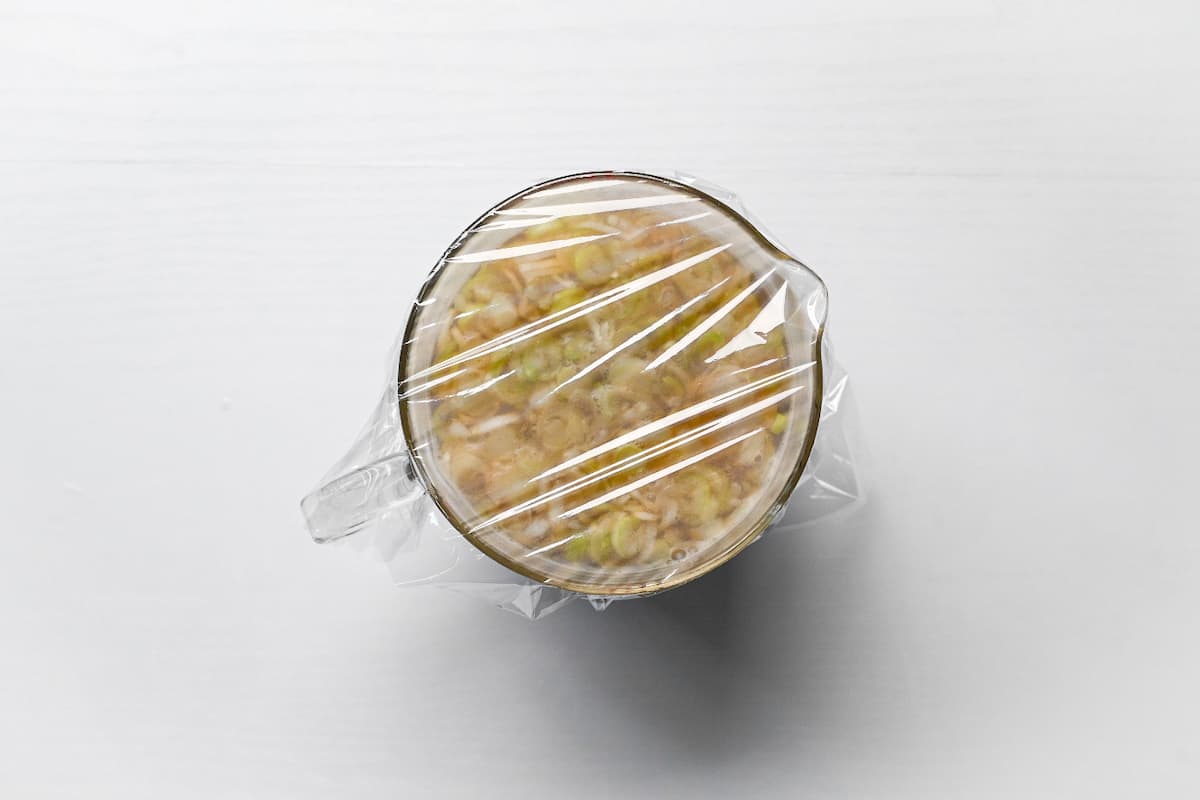
When making the soup, add half the water and microwave as usual. After it’s cooked, replace the missing water with ice cubes. They will need to have melted before serving, but it will certainly speed up the chilling process. (250ml of water = 250g of ice cubes.)
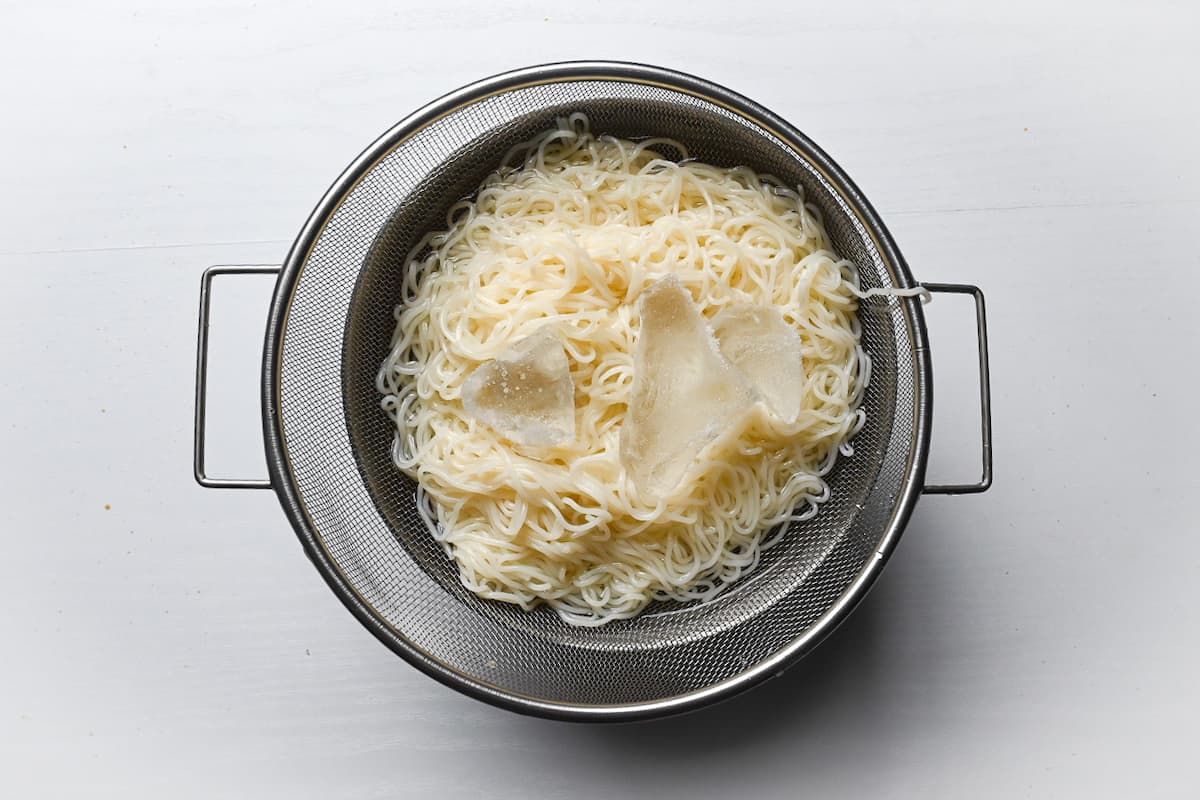
Dry somen noodles cook very quickly, most only take 2-3 minutes. After boiling, pour the somen into a mesh sieve to drain the hot water and cool them down by running them under cold water. Add ice to chill them further!
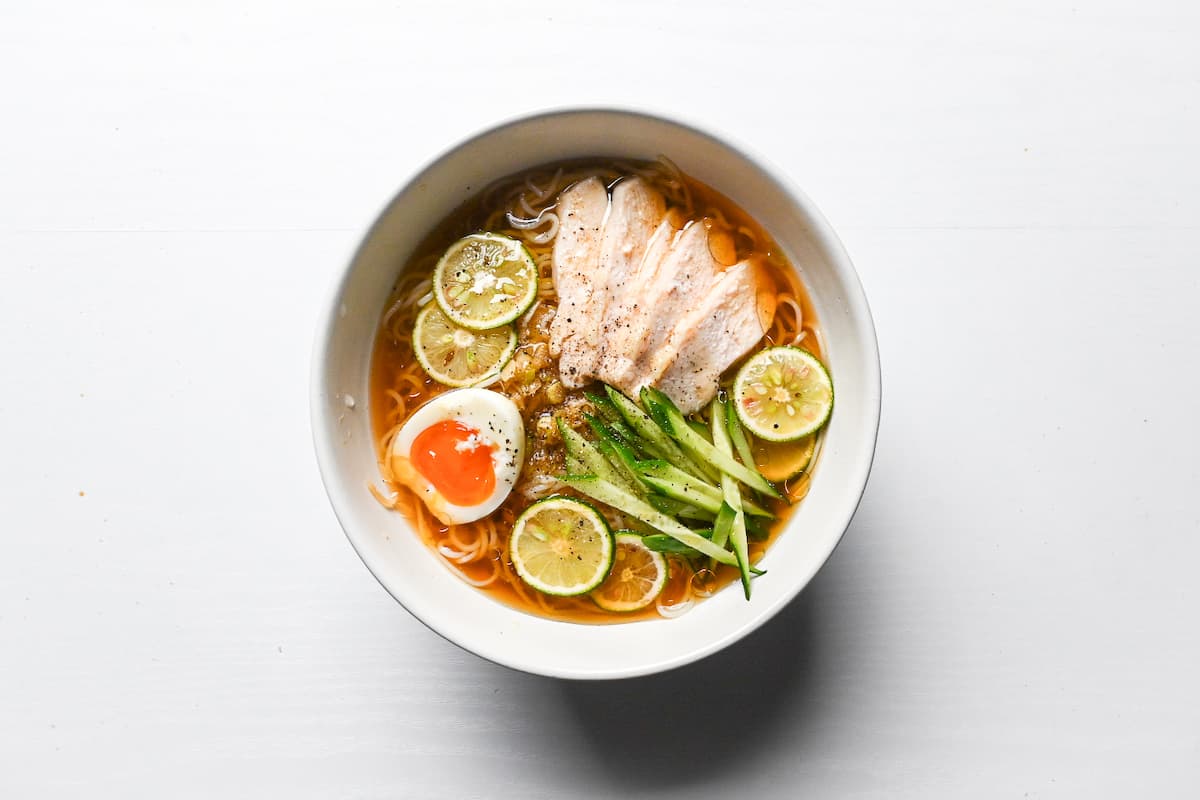
Cut the chicken into slices and divide the soup between the serving bowls. Add your noodles, chicken, cucumber, soft-boiled egg, and a few slices of citrus of your choice.
I also like to sprinkle with black pepper and a drizzle of sesame oil for a finishing touch.
Squeeze some citrus juice directly into the soup for some added zing! I often save half of my citrus fruit specifically for this reason.
I hope you enjoy this refreshing summery recipe!
Jump to Full Recipe Measurements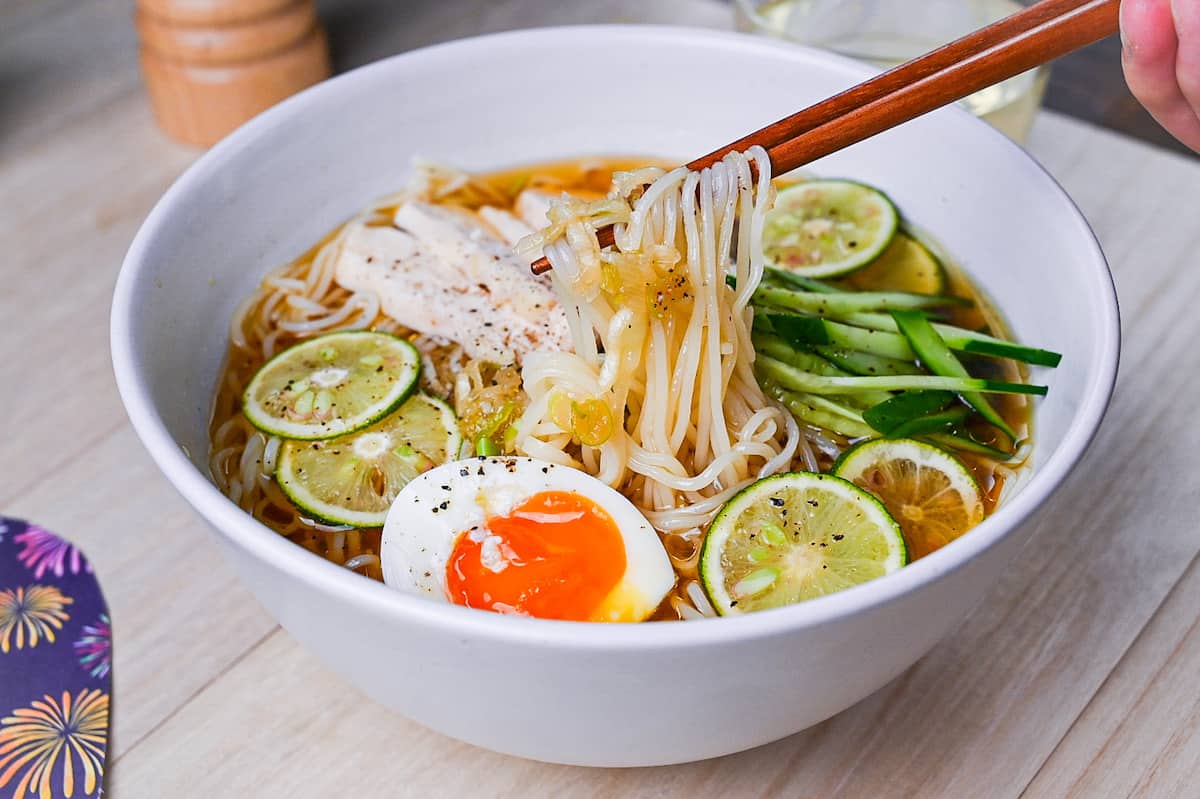
FAQ
Originally, somen came from a wheat snack called “sakubei (索餅),” which is believed to have been introduced from China during the Nara period (710-794). Incidentally, the prototypes of traditional foods that are now indispensable to Japanese cuisine, such as soy sauce and natto (fermented soybeans), were brought to Japan around the same period.
However, it was not until the Edo period (1603-1867) that somen became commonly eaten in Japan, especially as a cold noodle dish.
Today, somen is loved throughout the nation. In addition to Nara Prefecture’s Miwa Somen, Hyogo Prefecture’s Ibonoito, and Kagawa Prefecture’s Shodoshima Somen, which are known as “Japan’s Three Great Somens,” somen production flourishes in Western Japan. One of the reasons for this is believed to be the close proximity of wheat, soft water, and sea salt used as ingredients.
You might have seen or heard of something called “nagashi somen.” Rather than being the name of a dish, it’s more like a method of eating somen where the cooked noodles flow down a bamboo slide in running water. The flowing somen is “caught” with chopsticks and dipped in a personal bowl of noodle dipping sauce before eating.
Nagashi Somen” is a summer tradition, and if you are Japanese, just the thought of it makes you feel cool or reminisce about your childhood. However, it is not so much a delicious dish as it is a fun activity for children to enjoy eating together outside in hot and humid Japanese summer.
Incidentally, Nagashi Somen originated in 1955, so it is a surprisingly new way of eating somen. It is said that the idea came from the sight of people boiling some in the open air during hot summer fieldwork and then running the water of Takachiho Gorge through a long piece of bamboo cut lengthways to cool it down.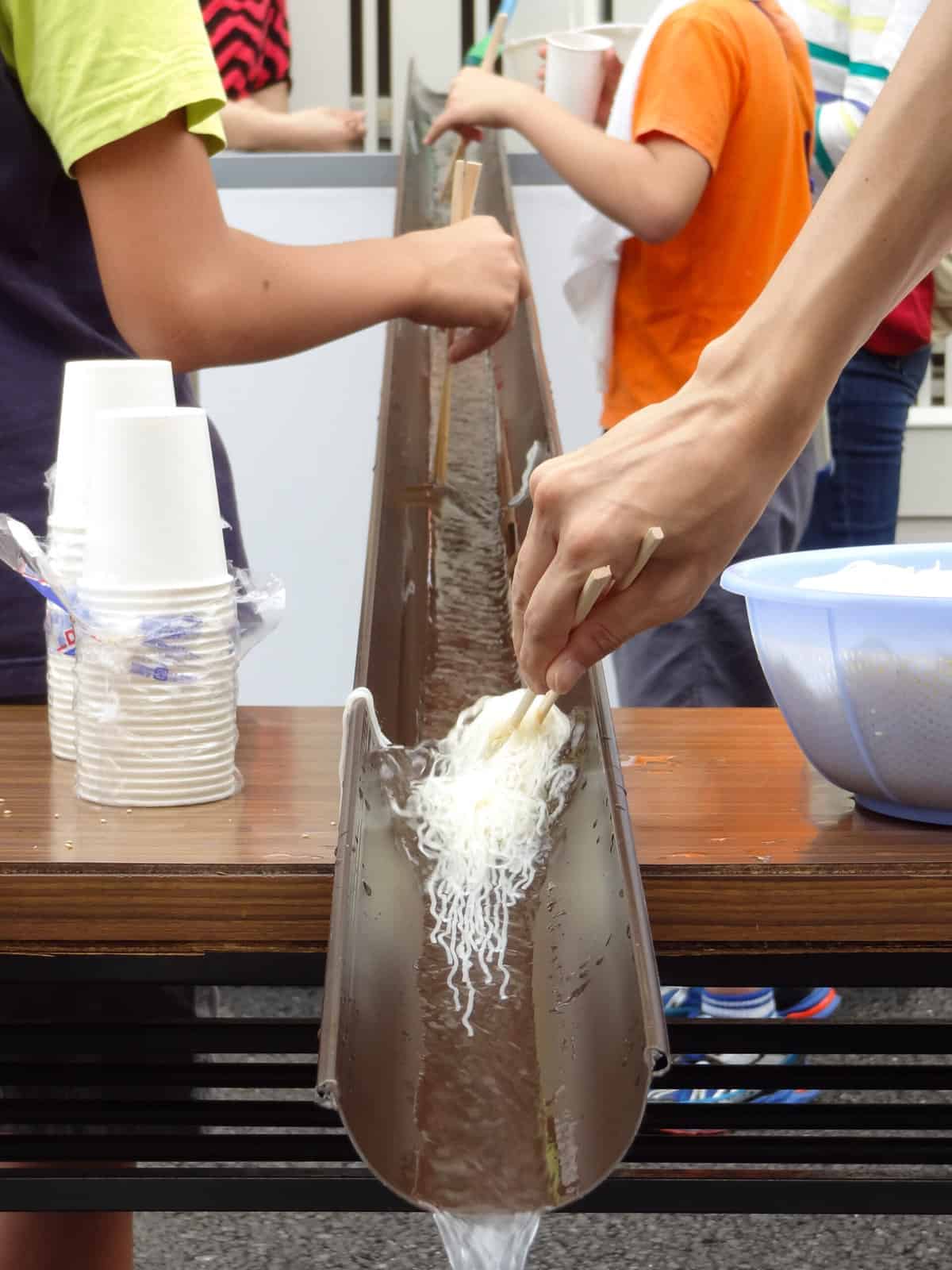
Somen and soba noodles use different ingredients. Somen is made from wheat flour, while soba is made from buckwheat flour. Ramen noodles use wheat flour with added lye water and sometimes eggs. Udon noodles are made from wheat flour, salt, and water. Somen is thin and white, soba is relatively thin and grayish-brown, ramen is yellow and varies in thickness, while udon is thick and white.
Yes, you can. But in Japan, somen is preferred to be consumed cold and is even considered a summer food.
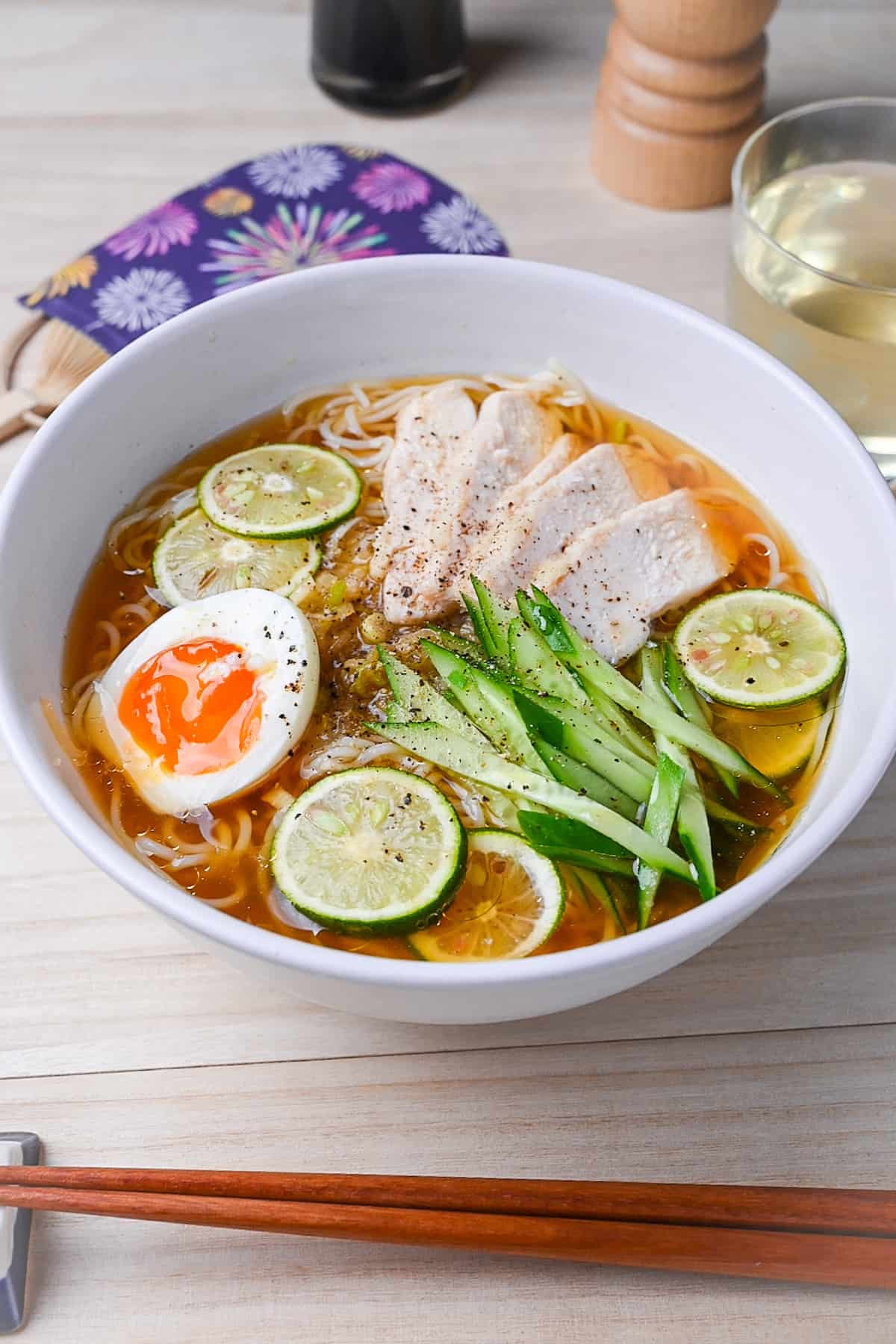
I hope you enjoy this Somen recipe! If you try it out, I’d really appreciate it if you could spare a moment to let me know what you thought by giving a review and star rating in the comments below. It’s also helpful to share any adjustments you made to the recipe with our other readers. Thank you!
More Japanese Cold Noodle Recipes
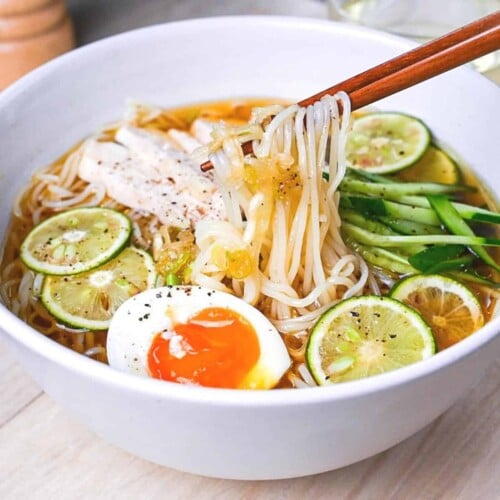
Chilled Chicken and Citrus Somen Noodle Soup
Ingredients
Chicken
Soup
- 30 g green onion
- 500 ml water
- 3 tbsp soy sauce
- ½ tbsp Chinese-style chicken bouillon powder (granules)
- 1 tsp grated garlic or garlic paste
- 1 tsp salt
- 1 pinch sugar
Somen
- 200 g dry somen noodles
- ice cubes optional
- 1 sudachi or lime / lemon – thinly sliced
- 1 Japanese or Persian cucumber Japanese or persian – julienned
- 1 boiled egg halved
- ½ tsp toasted sesame oil
- 2 pinches ground black pepper to taste
Instructions
Chicken
- Dry the surface of 150 g chicken breast with a paper towel.

- Stab with a fork all over on both sides.

- Sprinkle both sides with a 2 pinches salt and evenly coat with 1 tsp cornstarch.

- Take a microwavable bowl and add ½ tbsp sake, 1 tsp Chinese-style chicken bouillon powder (granules), 1 tsp mirin, ½ tsp salt and ¼ tsp sugar. Mix well.

- Add the chicken breast to the bowl and place cling film loosely over the top. Microwave for 1 1/2 mins at 600W.

- Flip the chicken over (be careful of the steam), place the cling film back on and heat for another 1 1/2 mins 600W. Leave the bowl in the microwave and allow the chicken to rest in the steam for 10 minutes. It will continue to cook in the residual heat.

- After 10 minutes, remove the chicken from the bowl and allow to cool for about 10 minutes. Save the juices, we will add them to the soup later. Once the chicken cool to the touch, wrap and store it in the fridge until chilled. (30 mins – 1 hour)

Soup
- Finely chop 30 g green onion.

- Mix 500 ml water, 3 tbsp soy sauce, ½ tbsp Chinese-style chicken bouillon powder (granules), 1 tsp grated garlic, 1 tsp salt and 1 pinch sugar in a microwavable jug and heat in the microwave at 600w for 2 1/2 minutes.

- Add the spring onion and juices from the chicken to the jug, then allow to cool for about 10 minutes.

- Cover the jug and store in the fridge until properly chilled (approx 30 mins – 1 hour).

Assembly
- Boil 200 g dry somen noodles for the time stated on the packaging (usually approx 2 minutes). Pour through a mesh sieve to drain the hot water and cool by running under fresh cold water. Optional: add ice cubes to the noodles to make them extra cold.

- Divide the soup into serving bowls and add the noodles. Slice the chicken breast and place it on top of the noodles along with the julienned cucumber, boiled egg and citrus slices.

- Garnish with a sprinkle of pepper and a drizzle of sesame oil. Add a squeeze of citrus juice to the soup for some added zing. Enjoy!
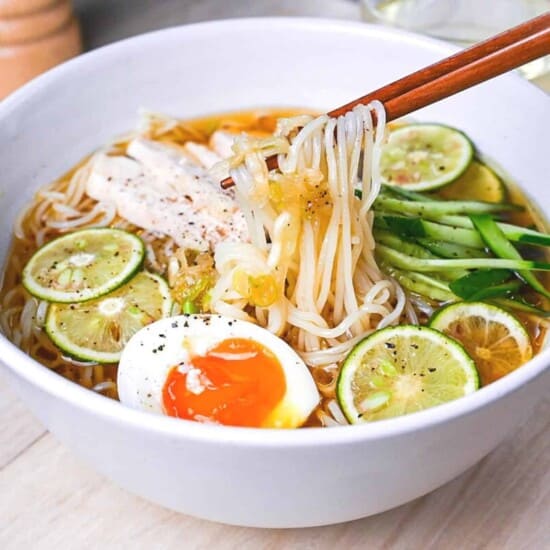


Made this tonight and was shocked at how good at was, especially your method for poaching chicken in the microwave. Great stuff!
Thank you so much, it means a lot!
Glad you enjoyed the recipe.
How would you recommend I prepare this as a vegetarian? Many thanks.
Hi Janis! For the broth, the best way to make it vegetarian is to swap the chicken bouillon powder for a plant-based alternative such as better than bouillon or vegetable bouillon. It will taste quite different, but it will still be good. As for toppings, you can add extra vegetables such as raw tomato (which I tried yesterday and it worked well!), pan-fried beansprouts or grilled eggplants. You could also use fried tofu instead of chicken breast, there are a lot of options.
Hope this helps! I’d love to hear how the plant-based version goes!
Yuto